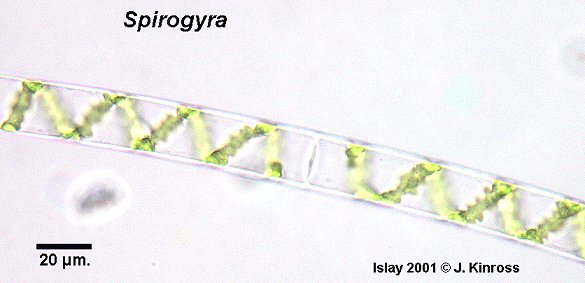
Adaptation
This organism also moves towards the surface of water closer to light to better their photosynthetic outcome. Spirogyra Longata can ‘move’ towards these light sources (mainly the sun) by repeated rolling and stretching of filaments when met with others. The filaments on the outside of the bundles curve towards the light seeking it with as much surface area as possible. Though Spirogyra does need light to survive, exposure to excessive amounts of light decreases the density of algae present. They often utilize all of the space they are given in the spring and form extensive springtime blooms in ponds. Though it may be a nuisance, the thick covering is harmless. Chloroplasts are easily seen under the microscope as well as sunlight when photosynthesis is needed. When eaten by a predator, it can easily perform reproduction sexually or asexually.
Spirogyra Longata have to eat too! Continue on for their means of Nutrition.
